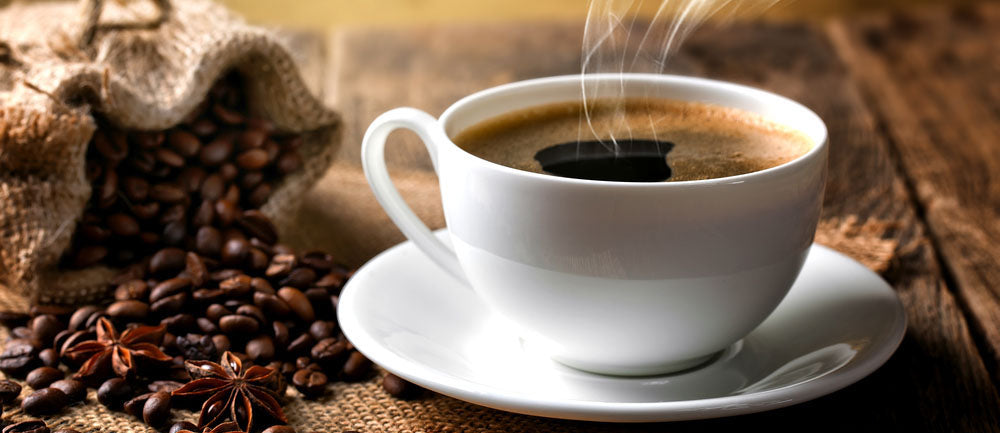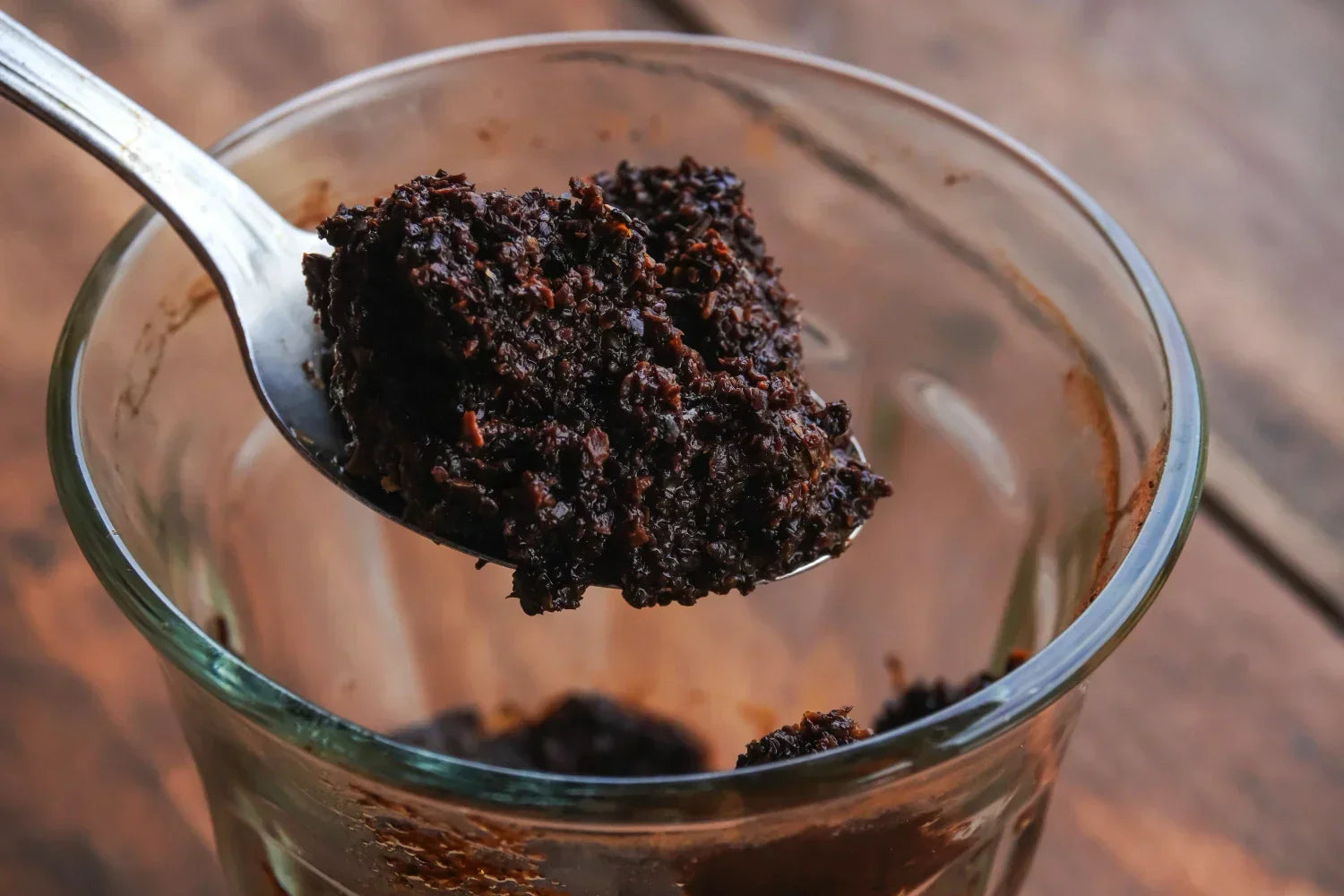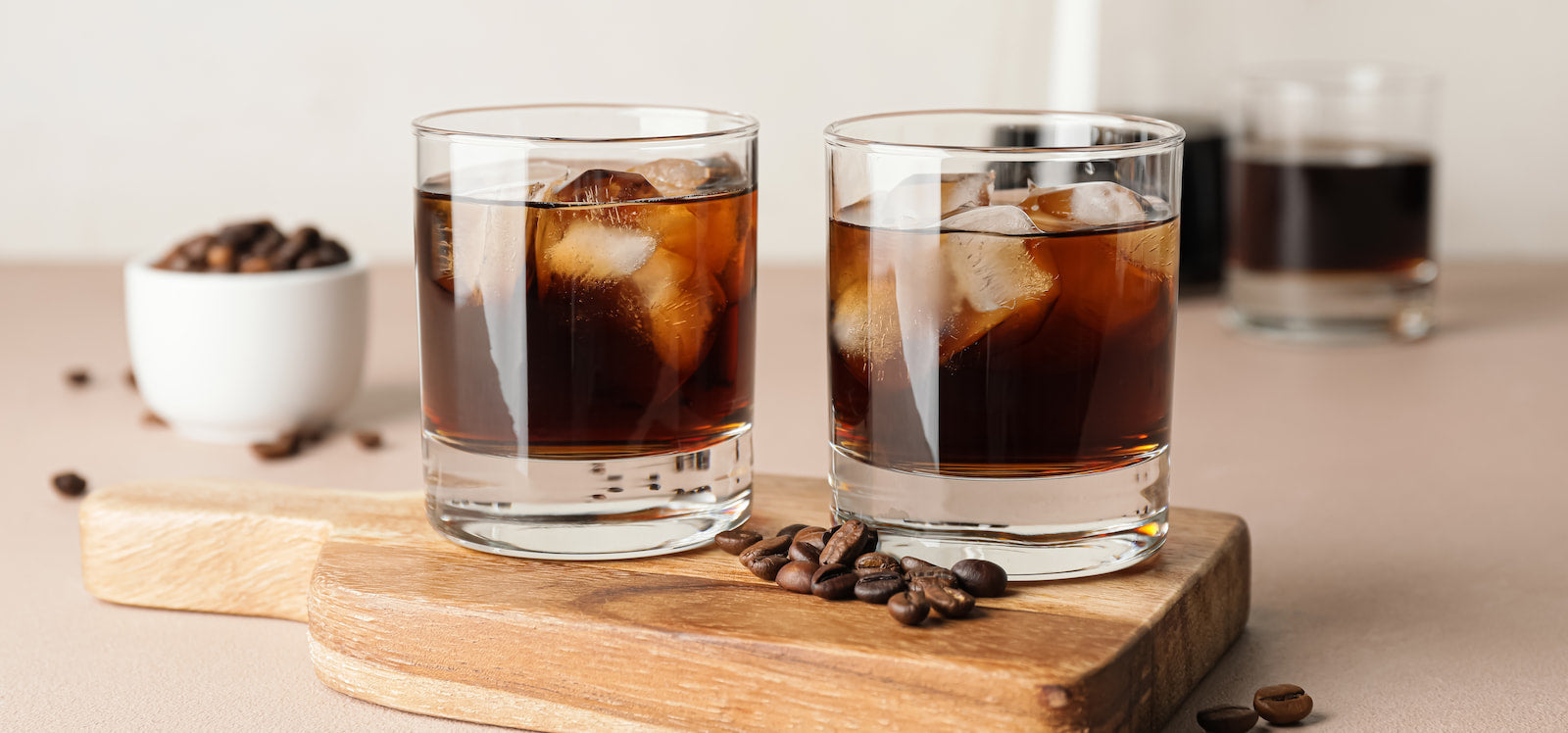Few things taste more refreshing than a glass of homemade cold brew on a warm summer afternoon. From the mellow flavor and velvety texture to the steady caffeine lift, a great cold brew feels like a hug in a cup. Yet, behind that smooth sweetness lies a small but crucial detail that makes or breaks the experience: your cold brew grind size.
If you’ve ever wondered why your cold brew turned out too bitter, too cloudy, or just not quite right, your grind size could be the secret culprit. Luckily, finding the perfect texture isn’t complicated. It’s just a matter of understanding what your beans need and picking up a few monk-approved tips along the way.
Why Grind Size Matters for Your Cold Brew Coffee
When brewing coffee, your goal should always be to extract as much flavor from the beans as possible. Preserving their delicious taste and delightful aroma is key to enjoying every brew. The catch? Each brewing method (French press, pour-over, cold brew, etc.) calls for a slightly different grind size. Use the wrong one, and you get a cup of java that’s either too bitter (over-extraction) or too weak (under-extraction).
Here’s a coffee bean grinding 101 rule: The finer the grind, the quicker it extracts flavor. If you’re whipping up a fresh batch of hot coffee using an Aeropress, then fine grinds are ideal because this coffee maker combines air pressure with a short extraction time. But if you like to use a French press, we recommend sticking with coarser grinds to allow for a slow, controlled flavor release. The result? A silky-smooth, full-bodied cup that’ll quickly become the highlight of your morning ritual.
And while the journey to that heavenly first sip might not look the same from one coffee drinker to another, there’s a safe grind size starting point that most cold brew connoisseurs can agree on. Since cold brews require a much longer steeping time than hot coffee, using a medium to coarse grind slows down the extraction process. This steers the brew toward a clean and sweet taste and away from acidic and sludgy.
But Before I Grind My Coffee Beans…What All Do I Need to Get Started?
Before grinding your coffee beans, gather your essentials. Cold brew is one of the easier methods to master: You just need patience, good ingredients, and a few tools to get started:
- Whole beans from Mystic Monk Coffee: We recommend medium to dark roast for a rich, chocolatey flavor. Try the Mystic Monk Blend or Cowboy Blend for balanced sweetness and depth.
- Burr grinder (manual or electric): For consistent coarse grinds, a burr grinder is your best friend. A blade grinder can work in a pinch but often produces uneven grounds that lead to inconsistent flavor.
- Cool, clean water: Filtered water makes a noticeable difference, letting your coffee’s natural notes shine through.
- Measuring cup: It helps you measure your coffee-to-water ratio accurately for repeatable results.
- Brewing container: Any large glass jar, pitcher, or dedicated cold brew maker will do.
- Strainer: For separating grounds from liquid. A fine-mesh sieve or coffee filter works well.
- French press (optional): Doubles as an easy cold brew maker with built-in filtration.
- Large spoon or paddle: To stir and evenly saturate the coffee grounds.
- Airtight container: For storing your finished cold brew in the refrigerator for 1–2 weeks.
How to Grind Beans for the Best-Tasting Cold Brew

While general guidelines exist, the best grind size depends on your specific brewing method, beans, and personal taste. We recommended experimenting with different grinds (medium to coarse) to find what tastes best to you.
With the above in mind, follow these simple steps to achieve a consistently smooth, flavorful batch every time:
-
Start With Whole Beans
Grinding just before brewing helps preserve those aromatic oils that make each sip so satisfying. But if you prefer the ease of pre-ground coffee, Mystic Monk Coffee’s signature medium “universal” grind is carefully designed to brew beautifully across methods (including cold brew).
French press note: If you’re using a French press to make your cold brew, grinding fresh will help you achieve that perfect coarse texture that filters cleanly through the press screen. -
Set Your Grinder to Coarse
Aim for a texture similar to coarse sea salt or raw sugar (you should be able to see and feel each grain between your fingers). Large coffee particles slow the extraction process, reducing unpleasant bitterness and producing that clean, rounded flavor cold brew is known for.
Only have a blade grinder on hand? No problem! Just pulse the beans in short bursts instead of holding the button down continuously. Shake the grinder gently between pulses to help distribute the grounds evenly. You’re going for a texture that looks like tiny coffee “pebbles” or dense breadcrumbs. It may not be as uniform as a burr grinder, but it’ll still brew a smooth, refreshing cup.
French press note: A slightly coarser grind is ideal here, as it prevents grounds from slipping through the press filter and keeps your final brew crisp and sediment-free.
-
Measure Out Your Preferred Coffee-Water Ratio
A good starting point is 1 cup of coffee beans to 8 cups of water (about a 1:8 weight ratio) for a ready-to-drink cold brew. After your first batch, you’ll likely need to adjust this ratio until you get the flavor just right. Here’s a helpful guideline:
- For a stronger brew: Use more coffee or a bit less water. Keep the same amount of beans, but experiment with a 1:6 ratio for a rich, full-bodied cold brew concentrate, or go as bold as 1:4 if you love an extra-strong, espresso-like intensity.
- For a lighter brew: Use less coffee or add more water. Try a 1:9 or 1:10 ratio to create a gentler, easy-sipping cup with mellow sweetness and a crisp, refreshing finish.
French press note: You can keep the same ratios, but remember that most French presses hold around 4 to 8 cups of liquid. Most French presses are labeled with a “cup” size, although this number comes from European-sized portions (about 4–6 ounces per cup) and represents the number of coffee servings it can make, not how much water it can hold.
That means an “8-cup” press doesn’t hold eight full cups of water. It actually holds more like 32 ounces total (approximately 4–5 standard U.S. cups), or about eight small 4-ounce coffee servings.
Want to know how much water your French press can hold in cups? Take the total number of ounces, divide by eight, and leave some room for the plunger. If you divide by six instead of eight, that will automatically account for your stir and seep margin.
-
Combine Your Coffee and Water
Add your coarse grounds to your brewing container, pour in the cool water, and stir gently to make sure all grounds are saturated.
French press note: Add water halfway first, stir slowly with a spoon to wet all the grounds, then fill the rest of the way. Don’t push down the plunger yet, just cover the top lightly to keep dust out during the steep.
-
Steep Slowly
Cover your brewing container and let it rest at room temperature for 12–16 hours, allowing time and patience to work their quiet magic. During this slow extraction, the cool water gently coaxes out the coffee’s natural chocolatey sweetness and smooth, rounded body, without the bitterness that heat can bring. The longer it steeps, the silkier and more decadent your brew becomes.
French press note: Let your French press steep on the counter (no need for heat or refrigeration). After 12–16 hours, you’ll simply press down the plunger slowly to separate the grounds before serving or storing cold.
-
Strain Carefully
Once your coffee has steeped to perfection, pour it through a fine mesh filter or cheesecloth to separate the grounds. Move slowly and avoid stirring, as too much motion can make your cold brew cloudy. This gentle approach keeps your brew clear, crisp, and beautifully smooth, just the way our monks intended.
French press note: If using a French press, this step is built right in. Simply plunge gently and pour your cold brew into another container or pitcher for storage. For an extra-clear cup, you can run it through a paper filter afterward.
-
Store and Savor
Pour the cold brew concentrate into an airtight container and refrigerate. It’ll stay fresh and delicious for up to a week. When ready to enjoy, dilute your brew with water, milk, or your favorite creamer for a deeply indulgent cup.
Ready to brew like a monk? Explore our highly-rated coffee blends to get started.
Tips for a Silky-Smooth, Decadent Cold Brew Cup

Cold brew is part art, part patience. With just a few mindful tweaks, like how you grind, steep, and strain, you can transform good coffee into something truly decadent. Here’s how to capture that signature Mystic Monk Coffee smoothness in every sip:
Start with a Coarse “Sea Salt” Grind (Your Baseline)
If your cold brew tastes bitter or gritty, the grind is likely too fine. Aim for a size that looks and feels like coarse sea salt: large enough to see individual pieces, but small enough to extract flavor evenly.
Match Coffee-Water Ratios & Steep Time to Your Grind
The finer your grind, the shorter your brew time should be. The coarser the grind, the longer you can steep. If you accidentally grind too fine, reduce your steep time by a few hours (think 10–12 instead of 14–16) to avoid over-extraction. On the flip side, if your grind is extra coarse, let it steep for the full 16 hours to draw out that velvety sweetness cold brew is famous for.
Choose Your Filter & Control Sediment for Clarity
To avoid a muddy texture or gritty mouthfeel, double-filter your brew: first with a mesh sieve, then through a paper or cloth filter. This extra step yields a cleaner, brighter cup that’s as visually beautiful as it tastes.
Taste & Tweak in Two Brews
Cold brew is wonderfully forgiving. If your first batch isn’t perfect, taste thoughtfully. Too strong? Add more water next time. Too weak? Adjust your coffee-water ratio or steep longer. Each adjustment brings you closer to your own personal ideal (and a daily cup you’ll love).
Grind Fresh & Store Properly to Preserve the Flavor
Freshly ground coffee is the heart of a rich, aromatic cold brew. Once coffee is ground, its natural oils and aromas start to fade. So for the best flavor, grind your beans right before brewing. If you’re preparing in advance, keep your whole beans stored in a cool, airtight container to protect them from light, heat, and moisture.
For extended freshness, use the Monk Coffee Vault. Designed to seal in flavor and block out air, it helps your beans stay monk-level fresh for weeks, preserving that deep, roasted sweetness until you’re ready to grind and brew.
FAQs – Getting the Perfect Cold Brew Grind Size
Can I use pre-ground coffee for cold brew?
Yes! It won’t be quite as fresh as grinding your own beans, but Mystic Monk Coffee’s medium grind still brews beautifully. Just adjust your water ratio and steep time to balance the flavor and avoid unwanted bitterness.
What roast works best for cold brew?
Medium and dark roasts shine here. They’re naturally smoother, with notes of chocolate, caramel, and nuttiness that make every sip indulgent.
How do I know if my grind is too coarse?
If your cold brew turns out watery, sour, or weak, your grind is probably too coarse. The large particles don’t release enough flavor during steeping. Try adjusting to a slightly finer grind and steeping a bit longer (closer to 16 hours) to bring out that rich, chocolatey sweetness Mystic Monk Coffee drinkers know and love.
Can I reuse grounds for a second batch?
You can, but you probably shouldn’t. Once brewed, the grounds have already given up their best flavors. A second steep will taste flat, papery, or sour, no matter how long you leave it. For a true treat, start fresh each time.
Is it better to steep cold brew at room temperature or in the refrigerator?
Both work beautifully. It mostly depends on the flavor you’re after. Room temperature steeping works a tad faster (12–16 hours) and creates a fuller-bodied, slightly sweeter brew with deeper chocolate notes. Refrigerator steeping slows things down (18–24 hours) for a gentler, crisper taste that’s extra refreshing on warm days.
Either way, patience is key. Let time do the work, and your cup will reward you.
A Labor of Love: Your Journey to the Best Cold Brew Begins With Mystic Monk Coffee

Cold brew is the simplest form of coffee alchemy: just beans, water, and time. But the secret to that divine balance of sweetness and smoothness lies in your grind size. Once you find the right texture, every sip becomes a small act of calm and a moment worth savoring.
For the richest results, start with freshly roasted whole beans from Mystic Monk Coffee. Whether you choose the cocoa-infused Paradiso Blend, the bold, chocolately Hermits Bold Blend, or another monk-crafted favorite, you’ll taste the care and devotion poured into every roast.
So go ahead: Grind, brew, and taste the difference that true monk-crafted coffee can make.
Read more

There's something almost undeniably sacred about that first morning cup of coffee: the swirl of bean and cream in your favorite mug, the inviting aroma that wraps you in comfort, and the warmth tha...

Coffee lovers can use up a small pile of fresh coffee grounds over the course of a whole week. Should all of it just go into the trash? They can, but it may be better to use those leftover grounds ...

